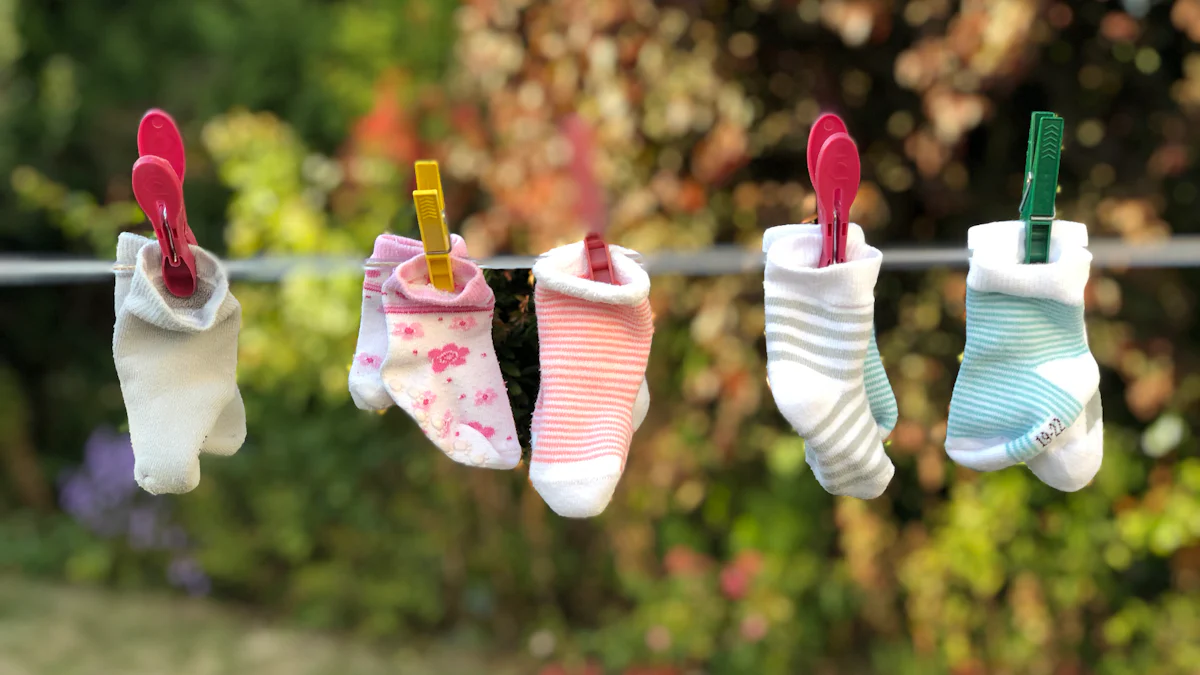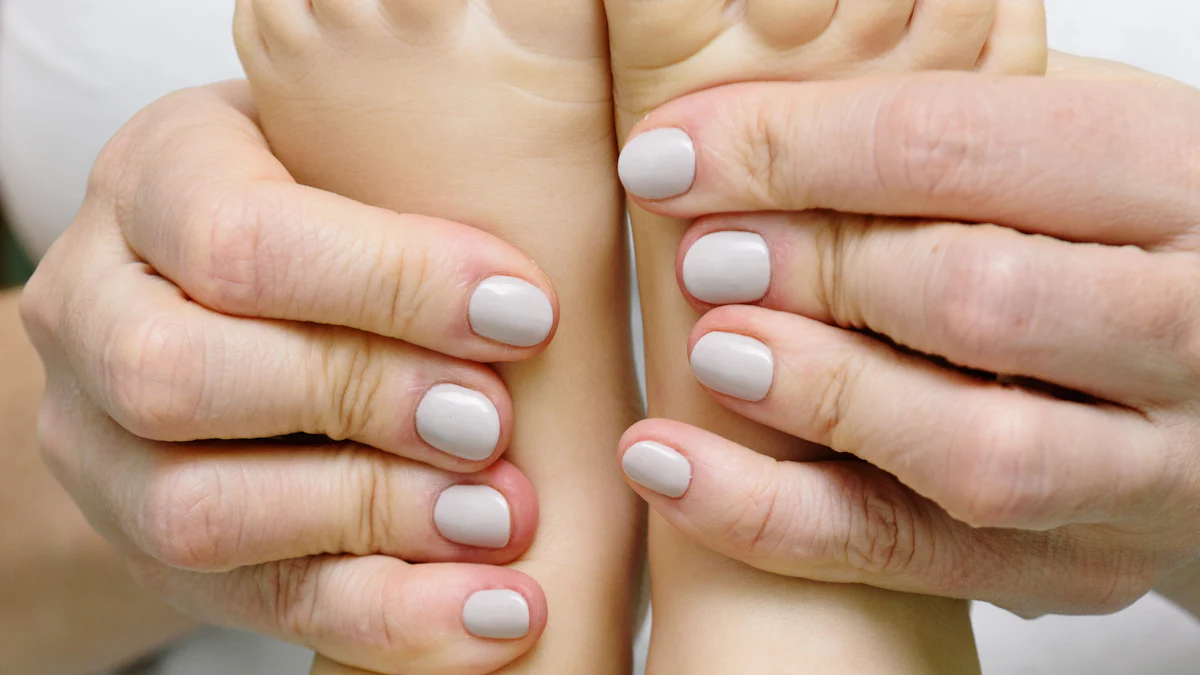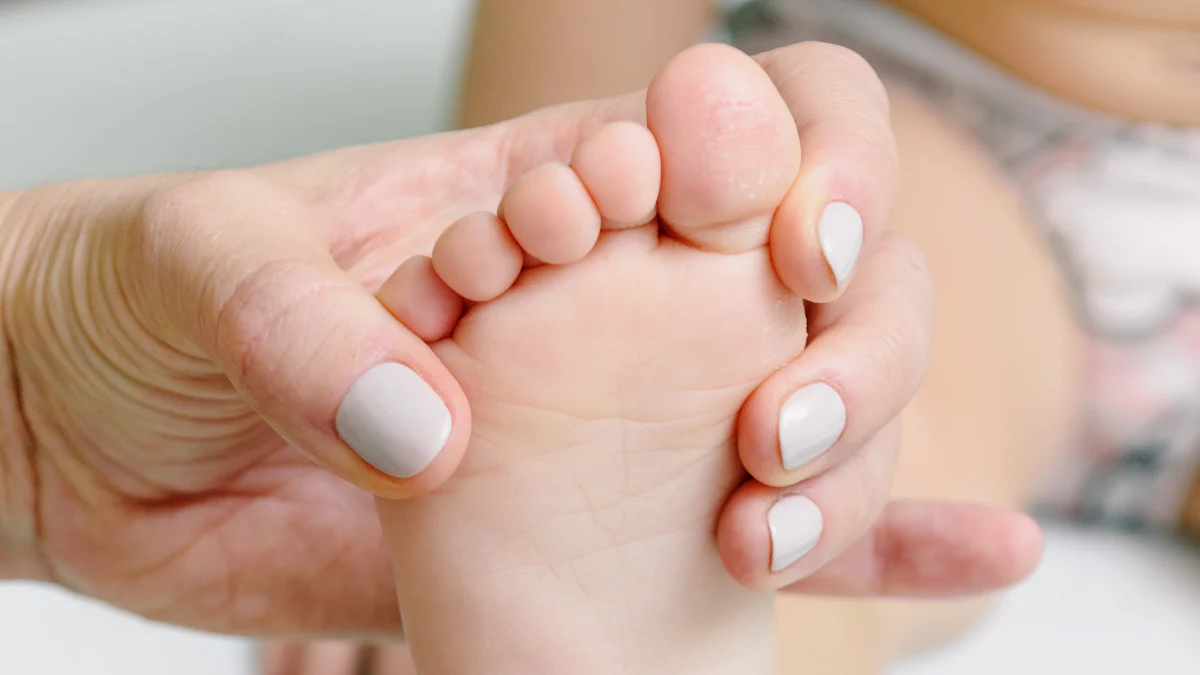
Finding the right children’s socks sizes for kids is very important. Socks that fit well give comfort and support. Wrong sizes can cause problems. Tight socks can stop blood flow. Loose socks can bunch up and slip off. These issues can cause discomfort or pain. Studies show bad footwear, like wrong socks, harms kids’ feet. Getting the right children’s socks sizes helps avoid these problems. Correct sizes help healthy foot growth and overall health.
Understanding Children’s Sock Sizes
Sock Size vs. Shoe Size
Sock sizes often correlate with shoe sizes. Knowing your child’s shoe size helps determine the correct sock size. For example, a child with a shoe size of 3-7 usually needs a sock size of 5-6.5.
Common sock size charts provide a reliable guideline. These charts convert shoe sizes to sock sizes. Many brands offer these charts to help find the perfect fit. Always check the company’s specific chart for accurate sizing.
Age-Based Sock Sizing
Age can also guide you in finding the right sock size. However, every child grows differently. Regularly measure your child’s feet to ensure the best fit.
Infant Sock Sizes
Infants from 6 to 12 months or with baby shoe sizes 2–4 wear the smallest sock size. Proper fit is crucial for comfort and healthy foot development.
Toddler Sock Sizes
Toddlers aged 1 to 2 years or with shoe sizes 3–7 typically need toddler-sized socks. These socks should fit snugly without being too tight.
School-Age Children Sock Sizes
Kids aged 3 to around 7 usually wear the next size up. For children aged 5-10 years with shoe sizes 12-6 (Youth), the recommended sock size is 8-9.5. Always refer to a size chart to match the shoe size with the correct sock size.
Measuring Your Child’s Feet

Accurate measurements ensure the right children’s socks sizes. Properly fitting socks support foot health and comfort. Follow these steps to measure your child’s feet.
Tools Needed
Measuring Tape
A measuring tape provides precise measurements. Use a flexible tape for better accuracy. Place the tape flat against the foot for correct readings.
Printable Foot Measuring Guides
Printable foot measuring guides offer an easy solution. Download and print a guide from a reliable source. These guides often include instructions for use.
Step-by-Step Measuring Guide
Measuring Length
- Place a piece of paper on a hard surface.
- Have your child stand on the paper with full weight on both feet.
- Mark the tip of the longest toe and the back of the heel.
- Measure the distance between the marks using the measuring tape.
- Record the length in inches or centimeters.
Measuring Width
- Wrap the measuring tape around the widest part of the foot.
- Ensure the tape is snug but not tight.
- Note the measurement where the tape overlaps.
- Record the width in inches or centimeters.
Foot size assessment based on length and width is crucial. A study in the International Journal of Foot and Ankle highlights the importance of fitting for foot health during childhood. Regular measurements help track growth spurts. The journal Sensors emphasizes that knowing foot growth patterns can indicate when to buy new shoes.
Use these measurements to find the right children’s socks sizes. Consult size charts to match foot dimensions with sock sizes. Accurate measurements ensure comfort and support for growing feet.
Picking the Best Material
Choosing the right sock material is key. It ensures comfort and lasts long. Different materials have different benefits. Knowing these helps you choose better.
Common Sock Materials
Cotton
Cotton is a favorite for kids’ socks. It’s soft and breathable. Cotton absorbs sweat, keeping feet dry. This lowers the chance of infections and irritation. Kids like how cotton feels, so they wear them often.
Wool
Wool, like Merino wool, controls temperature well. It keeps feet warm in cold weather and cool in hot weather. Wool also wicks away moisture, keeping feet dry during activities. Wool socks cushion and support, great for active kids.
Synthetic Blends
Synthetic blends like polyester are durable and easy to care for. They wash well without shrinking. Some synthetic socks wick away sweat to keep feet dry and cool. Reinforced toes and heels add cushioning and absorb shocks, making them tough against wear.
Material Considerations
Breathability
Breathability is important for kids’ socks. Socks should handle moisture well. Active kids sweat more, so breathable materials like cotton and wool help keep feet dry, preventing discomfort and infections.
Durability
Durable socks last longer. Synthetic blends like polyester are very durable. Reinforced areas in socks give extra cushioning and absorb shocks, making them resistant to wear.
Comfort
Comfort is crucial for kids’ socks. Soft materials like cotton feel gentle on the skin. Wool cushions and regulates temperature well. Seamless socks prevent blisters and chafing, reducing irritation.
Tips for Ensuring a Good Fit

Signs of a Good Fit
No Bunching or Slipping
A good fit means no bunching or slipping. Socks that bunch up can cause discomfort. Kids may feel irritated and distracted. Slipping socks can lead to blisters. Ensure the sock stays in place during activities. Check for smoothness across the foot.
Proper Heel Placement
Proper heel placement is crucial. The heel of the sock should align with the child’s heel. Misaligned heels can cause discomfort. This can also lead to wear and tear. Make sure the heel fits snugly without stretching.
Adjusting for Growth
Allowing Room for Growth
Kids’ feet grow quickly. Allow room for growth when choosing socks. A little extra space ensures comfort. Tight socks can restrict movement. Regularly check the fit to accommodate growth spurts.
When to Size Up
Knowing when to size up is important. Frequent complaints about tightness indicate a need for larger socks. Observe any red marks on the skin. These marks suggest the socks are too small. Size up to ensure comfort and proper foot development.
“My daughter has Sensory Processing Issues and socks are our biggest hurdle!!! Thank you for doing the research.” – Parent
Seamless socks can help kids with sensory issues. Some parents find seamless socks more comfortable. Wearing socks inside-out is another option. Experiment to find what works best for your child.
Finding the right sock size for kids means knowing their shoe size, measuring feet correctly, and picking good materials. Measure their feet often to get a good fit as they grow. Use size charts to match foot length with sock size.
Remember these tips:
- Make sure socks don’t bunch up or slip.
- Check that the heel fits right.
- Leave some room for growth.
Measure your child’s feet regularly. This keeps them comfy and helps their feet grow well. Pick socks that fit well and have space to grow. This stops foot problems and makes wearing shoes a happy experience.

